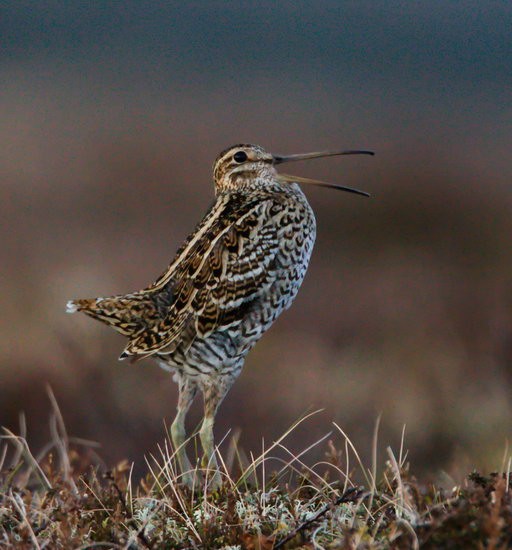Great Snipe
A species of Typical Snipes and Woodcock-snipes Scientific name : Gallinago media Genus : Typical Snipes and Woodcock-snipes
Great Snipe, A species of Typical Snipes and Woodcock-snipes
Botanical name: Gallinago media
Genus: Typical Snipes and Woodcock-snipes
Content
Description General Info
Description
At 26–30 cm (10–12 in) in length and a 42–50 cm (17–20 in) wingspan, adults are only slightly larger, but much bulkier, than the common snipe and have a shorter bill. The body is mottled brown on top and barred underneath. They have a dark stripe through the eye. The wings are broad, and a pale wingbar is visible in flight. The voice is described as a faint yeah. Mating display calls of groups can be heard at long distances (more than 300 m (330 yd)) and include a rising and falling series of chirping calls and accelerating clicking noises. 
Size
29 cm
Nest Placement
Ground
Feeding Habits
Great Snipe mainly consumes earthworms, supplemented by gastropods, insect larvae and adults, and marsh plant seeds. It probes soil for prey but also pecks from surfaces or shallow water. Typically feeds alone or in small groups during dawn, dusk, and at night.
Habitat
Great Snipe predominantly occupies wetland habitats for breeding, including river valleys, floodplain meadows, peatlands, and grassy tundras with sparse bush coverage. These environments provide ample subsurface invertebrates essential for their diet. Outside the breeding season, great Snipe is found in various marshlands, often characterized by short grass or sedge vegetation near lake edges or inundated fields. They also adapt to habitats such as montane bogs and open areas in woodlands.
Dite type
Insectivorous
General Info
Feeding Habits
Bird food type
Behavior
The birds are noted for their fast, non-stop flying capabilities over huge distances. They can fly up to 97 km/h (60 mph), with researchers finding little evidence of wind assistance. Some have been recorded to fly non-stop for 84 hours over 6,760 km (4,200 mi). Their wings are not especially aerodynamic, lacking pointed tips, and they typically do not stop to feed despite having opportunities. The birds instead rely on stores of fat. At dusk during the breeding season, the males display at a lek (arena), standing erect with chest puffed and tail fanned out. They may jump into the air, and will produce a variety of rattles, clicks, buzzes and whistles while displaying. Three to four eggs are laid in a well-hidden nest on the ground. These birds forage in soft mud, probing or picking up food by sight. They mainly eat insects and earthworms, and occasional plant material. They are difficult to see, being well camouflaged in their habitat. When flushed from cover, they fly straight for a considerable distance before dropping back into vegetation. 
Species Status
In 2012, there were estimated to be between 15,000 and 40,000 great snipe in Scandinavia and between 450,000 and 1,000,000 in western Siberia and northeastern Europe. The species is experiencing a population decline, owing primarily to habitat loss, as well as to hunting in eastern Europe and in its African wintering range. The species is classified by the International Union for Conservation of Nature as "Near Threatened". The great snipe is one of the species to which the Agreement on the Conservation of African-Eurasian Migratory Waterbirds (AEWA) applies. 
